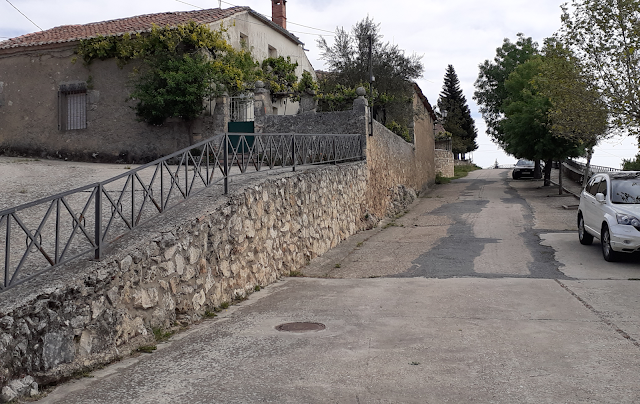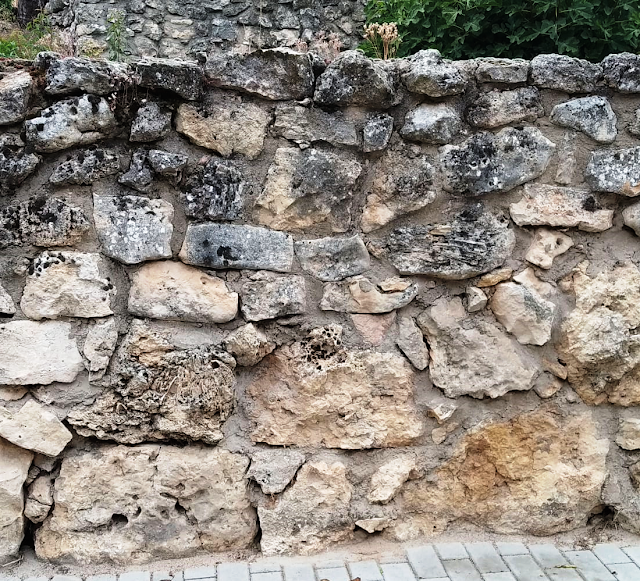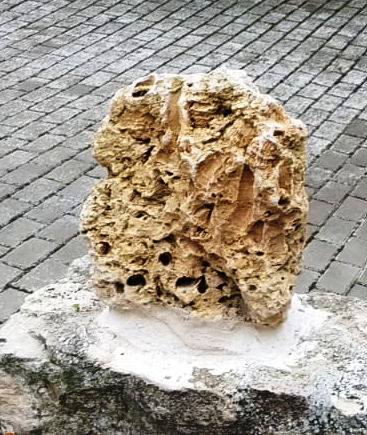Punto 6. La Cueva Grande (Plano Ruta 3) A lo largo del recorrido que va junto al arroyo, es posible ver un gran número de cuevas, (o abrigos dada su escasa profundidad y amplia entrada), aprovechadas como tenadas para guardar el ganado. También es común por esta zona del pueblo la presencia de colmenas, (ya en abandono). Estas cuevas, han sido originadas por el propio arroyo en momento de crecidas mayores a lo largo de varios cientos de miles de años, ya que el agua es capaz de disolver poco a poco el macizo carbonático, (que corresponde con la segunda barra carbonática). La presencia de agua ligeramente ácida, (por la presencia de dióxido de carbono) en unión con el carbonato, genera una reacción química que disuelve la roca, y que puede volver a cristalizar en otros puntos. 𝐶𝑎𝐶𝑂3+𝐻2𝑂+𝐶𝑂2↔𝐶𝑎2++2𝐻𝐶𝑂3− Durante este camino, vamos a tener todo el tiempo a nuestra derecha, el Arroyo llamado “de la Fuente del Prado” o Arroyo de los huertos y que suministra agua a















